Zion National Park
So we wander north into southern Utah, upstream along the Colorado River canyon complex. The canyon that is Zion National Park is formed by the Virgin River, a tributary to the mighty Colorado. The main canyon is closed to automobile traffic; a system of natural gas powered shuttle buses runs every 10 minutes or so from before dawn to late at night. The shuttle route extends into the bordering town of Springdale, so visitors have access to their motels, restaurants, and shops.
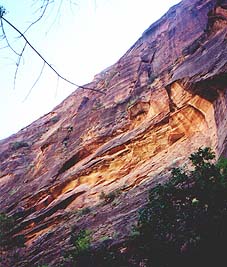
Zion sandstone is mostly rust-red and creamy white,
but there are vivid highlights of yellows, magentas, and purples. Vertical
stripes of black and grey-green lichens provide a counterpoint to the
horizontal strata. Zion has the most beautiful geology of all the places
we visited.
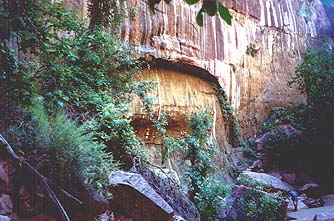
Rain falling on the plateaus above percolates down
through the porous sandstone, emerging from the canyon sides. This
provides a niche for lush plantlife, and gives a "hanging gardens" effect.
There is enough water to form creeks that run even through the dry high summer.
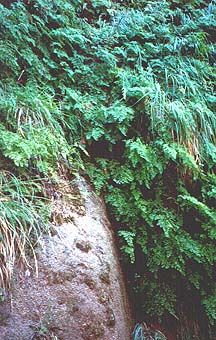
A detail of a dense patch of maidenhair fern, with
some penstemon, columbine, and other plants that really like to be moist!
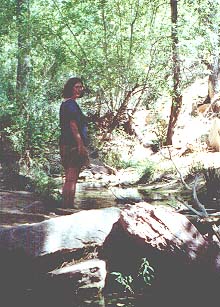
Even in September, it's over 100° F during
the day. We had been hiking all day, so we decided to take a break
by the creek, and cool our heels.

Smart hikers yield the right of way at all rattlesnake
crossings. This one was about 3 feet, with four rattles. We gave him plenty
of time to get across the path.
Below, sunrise and moonset (the moon is just past full).
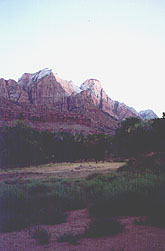

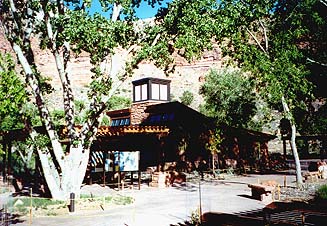
The Visitors Center complex is built of bricks milled from the native sandstone ... a very strikingly pleasant architecture. All the structures are a passive solar design, adding only a small amount of power to run pumps that keep the baffles wet at the tops of cooling towers ... this provides a blast of cool air inside the buildings.
As with the natural features, Zion's man-made component is the most beautiful of all the parks we visited.